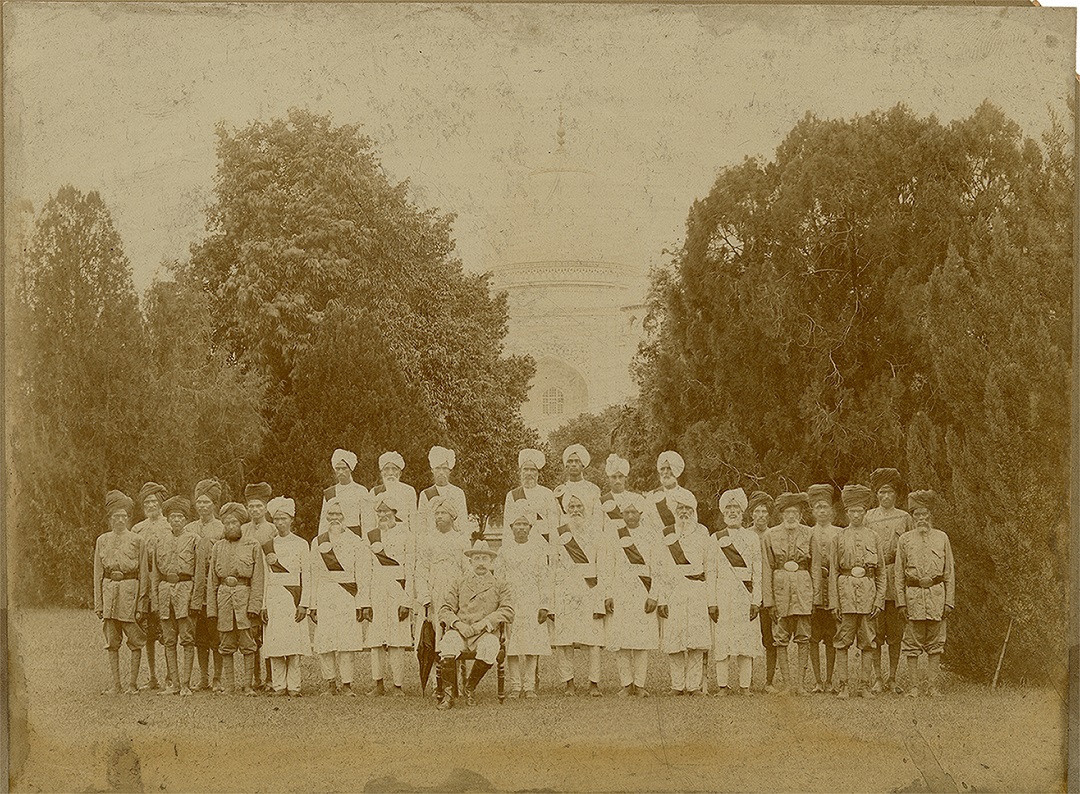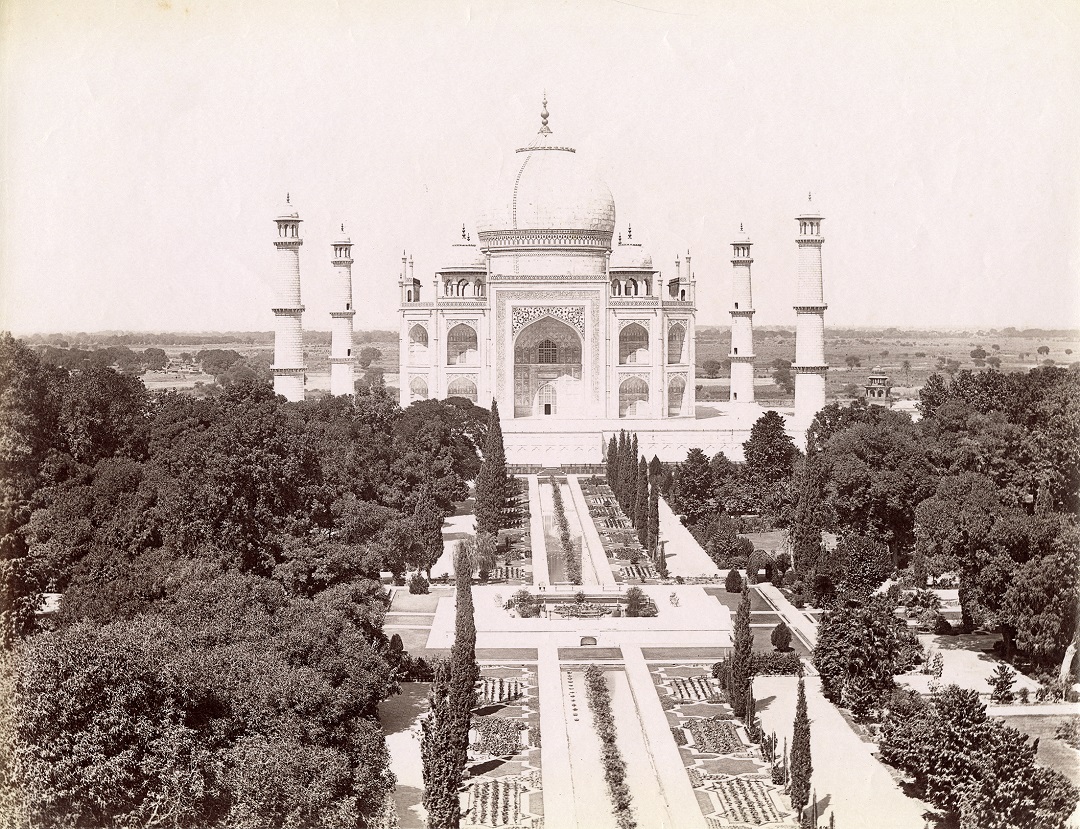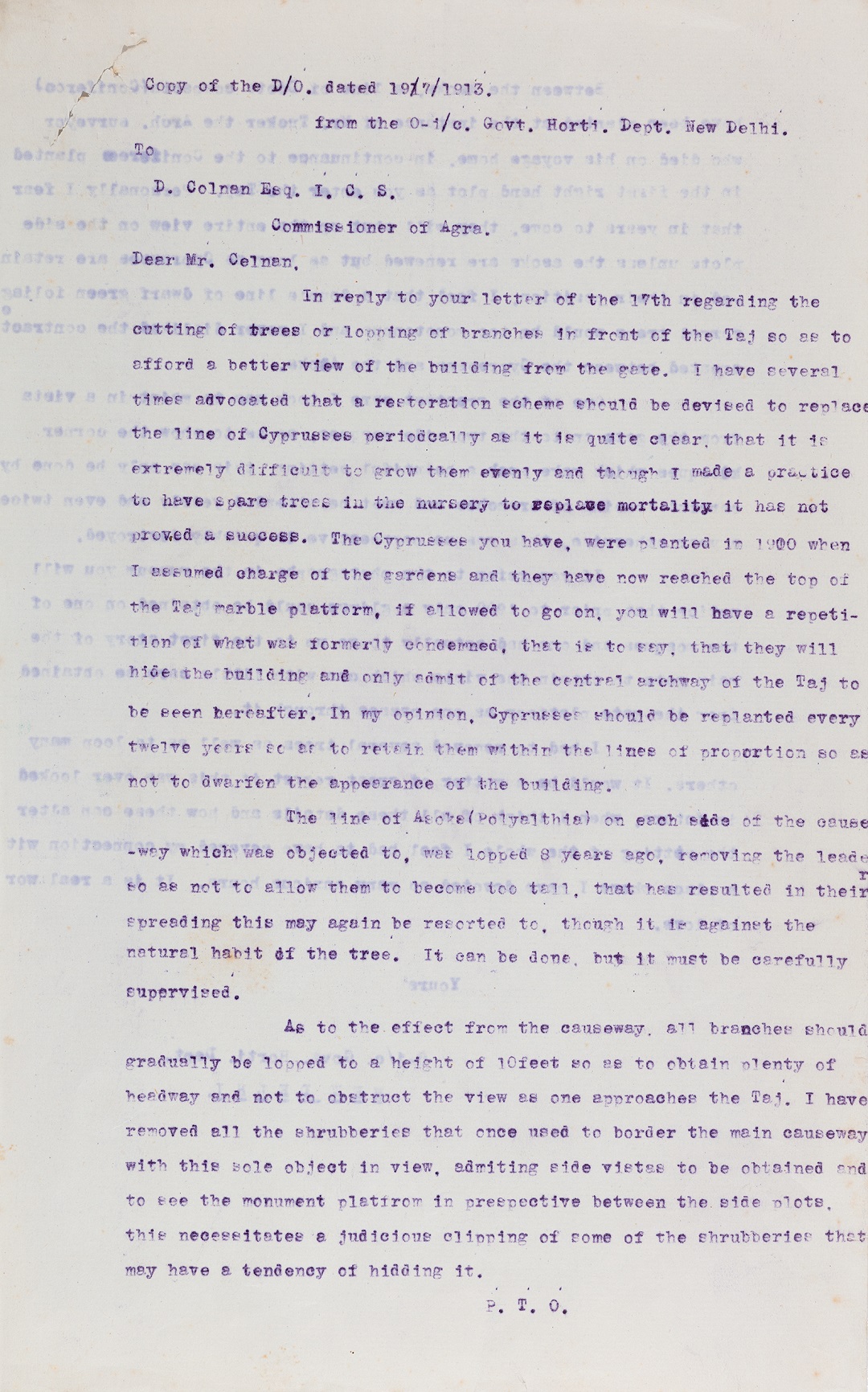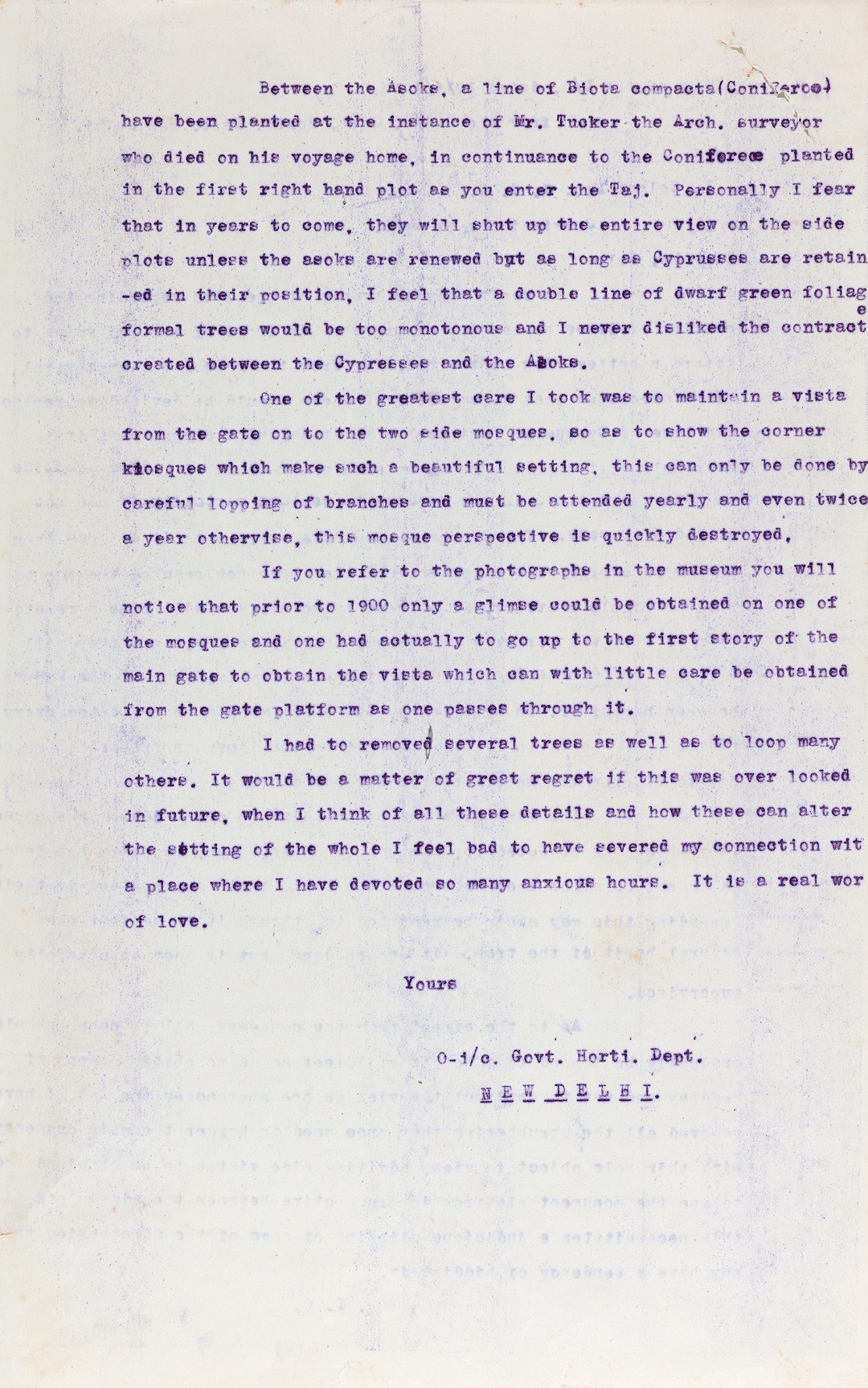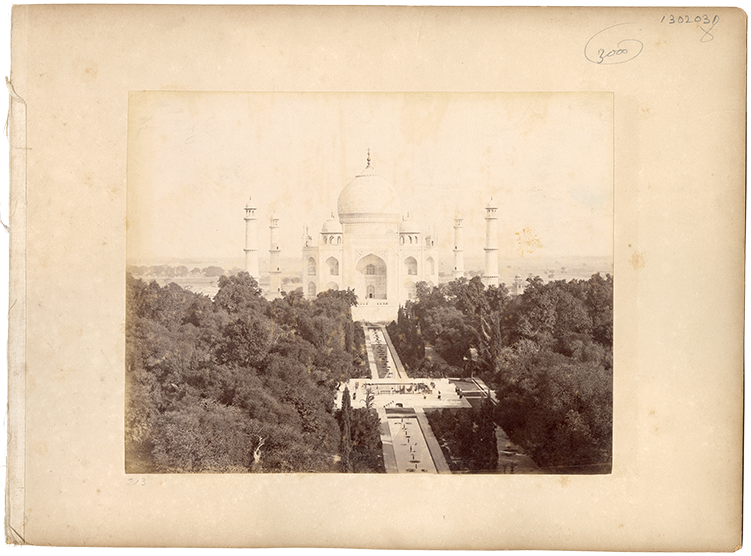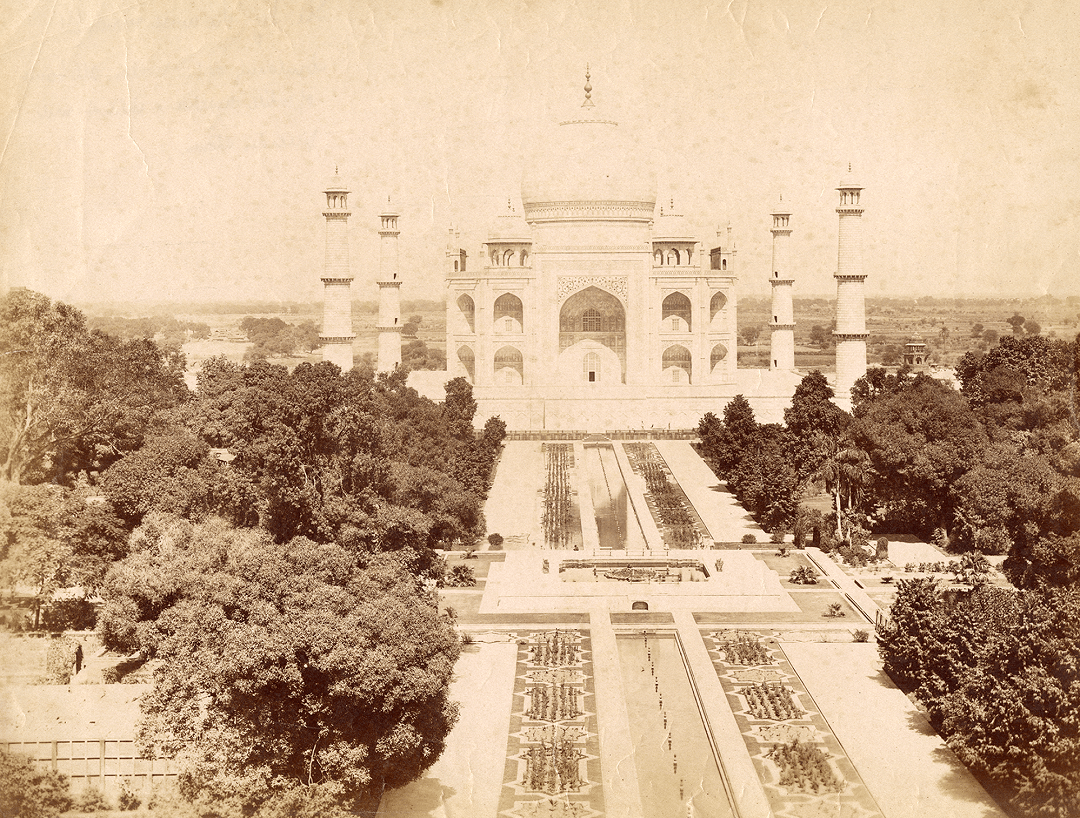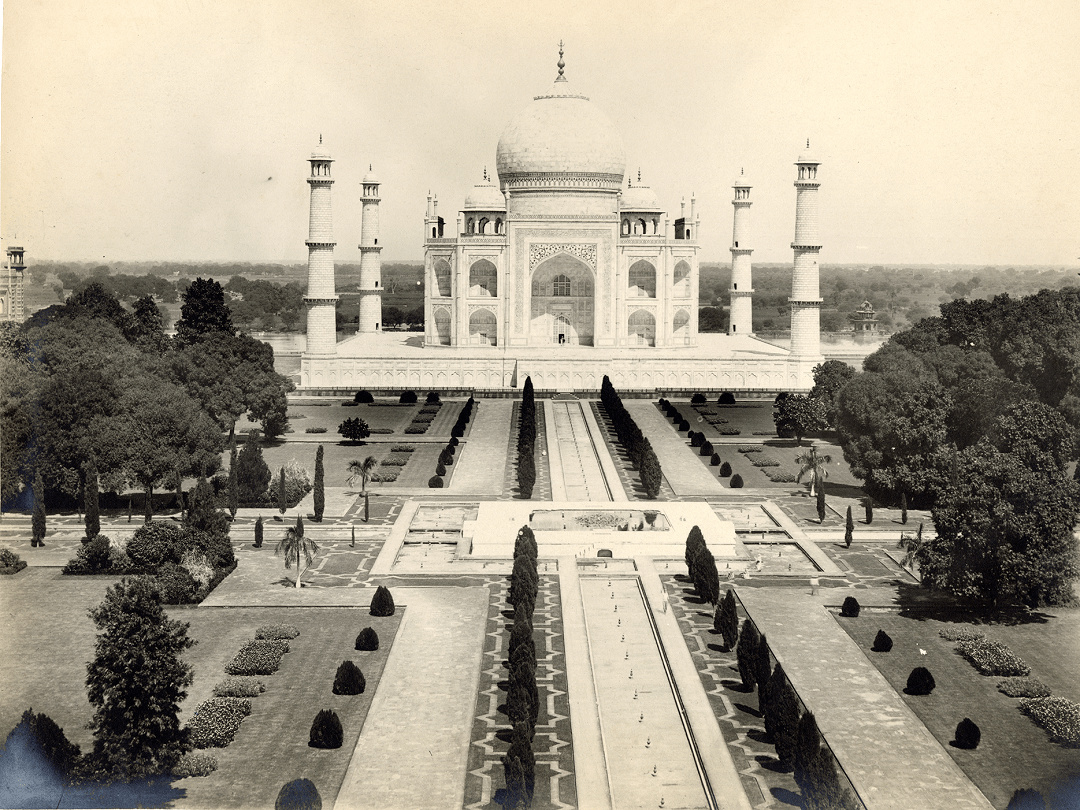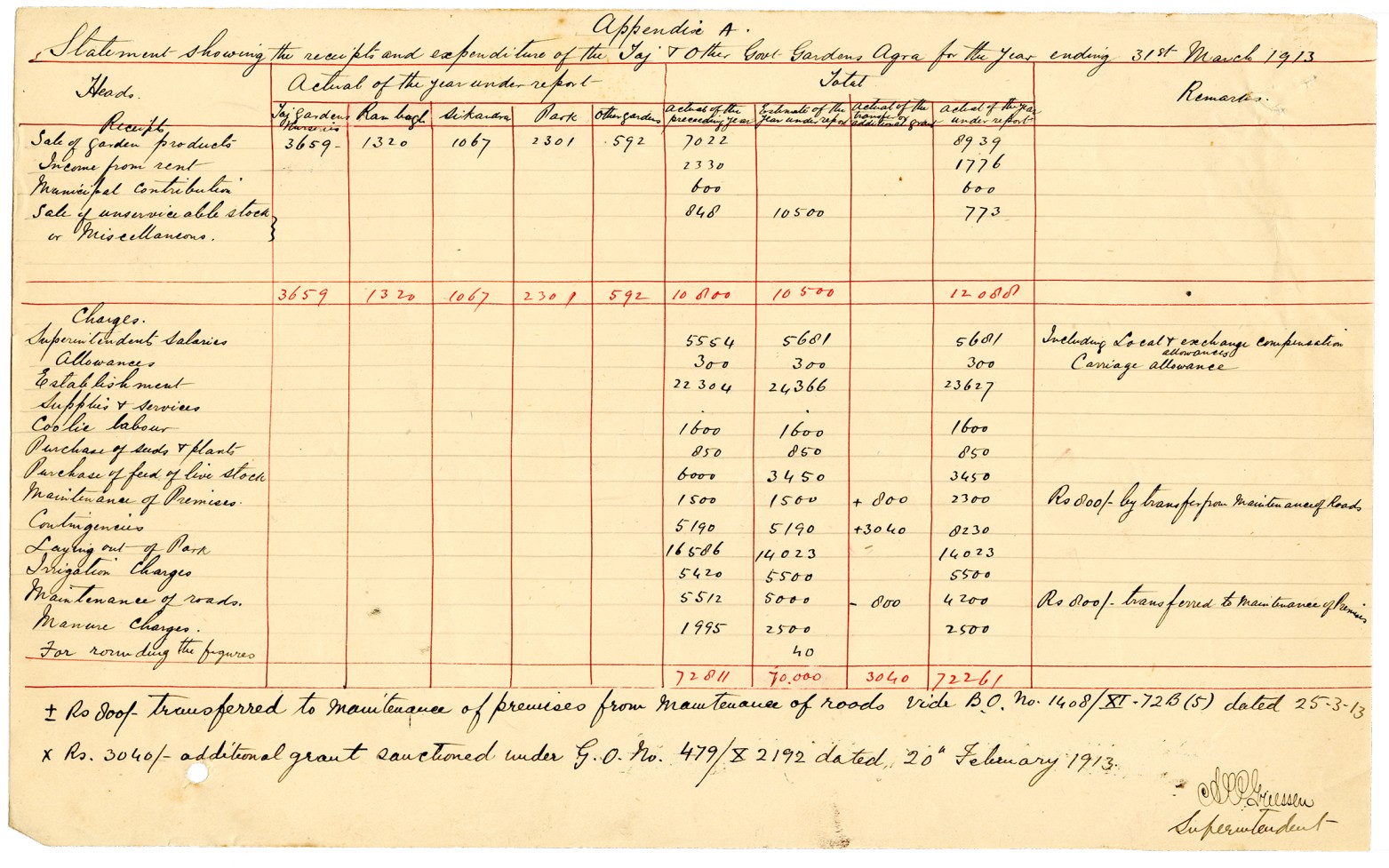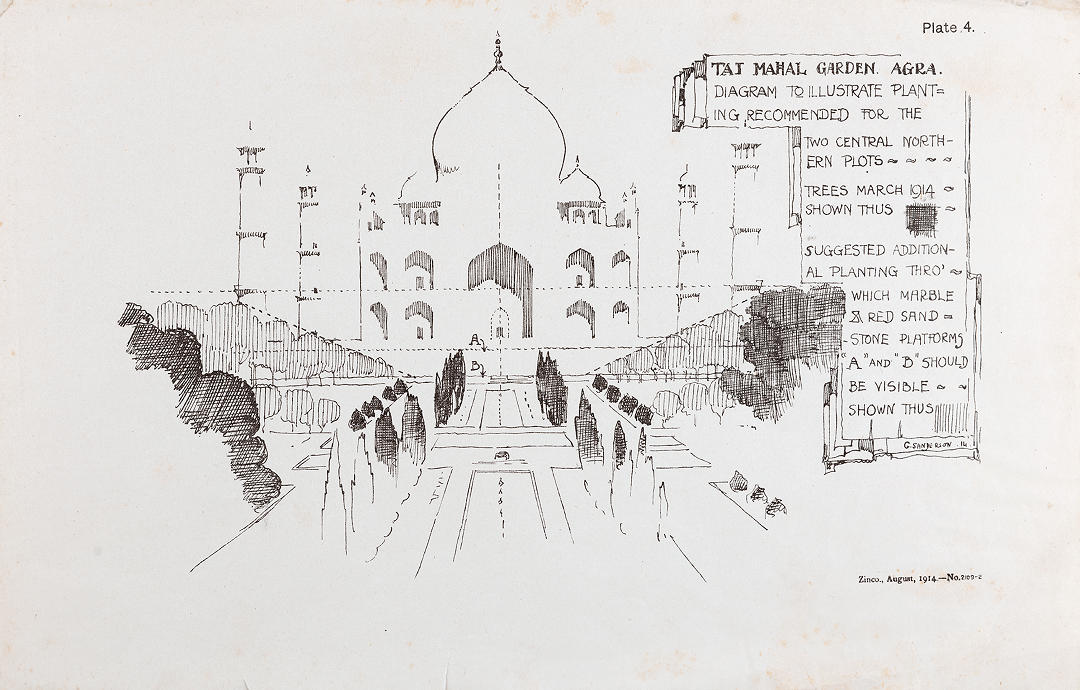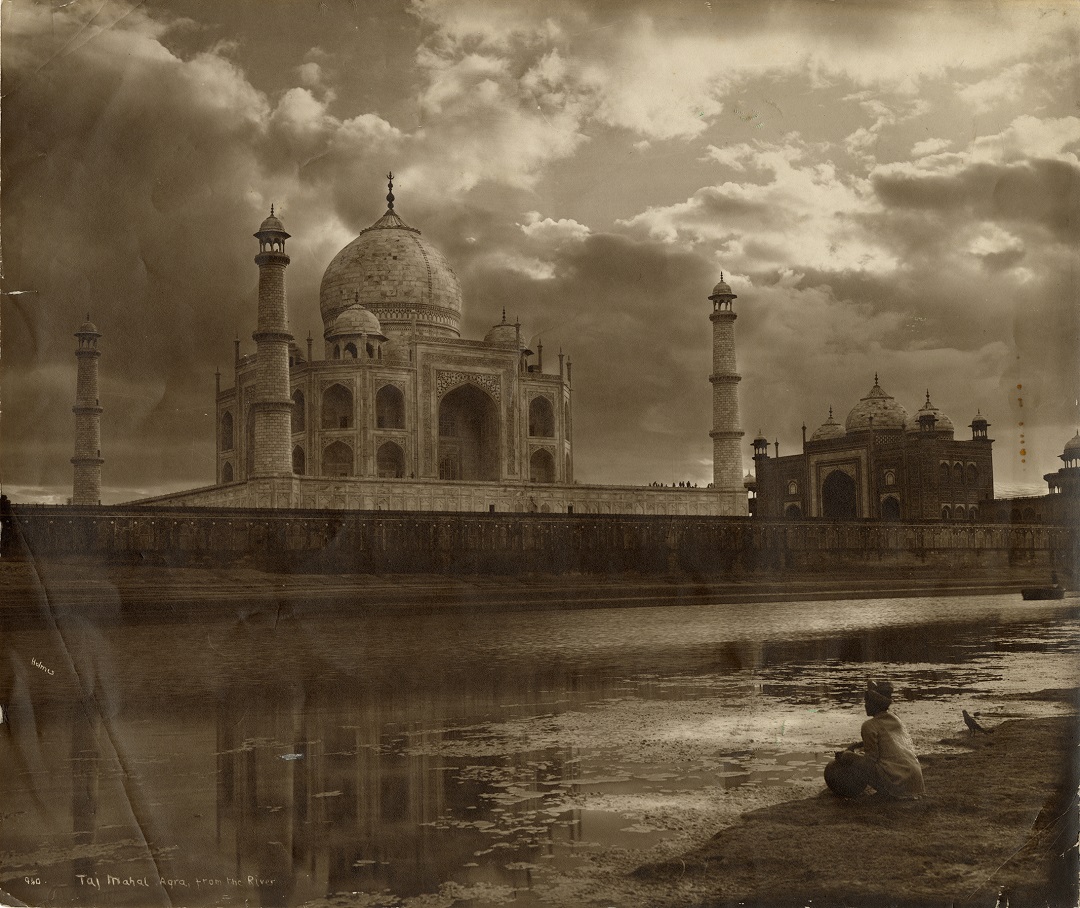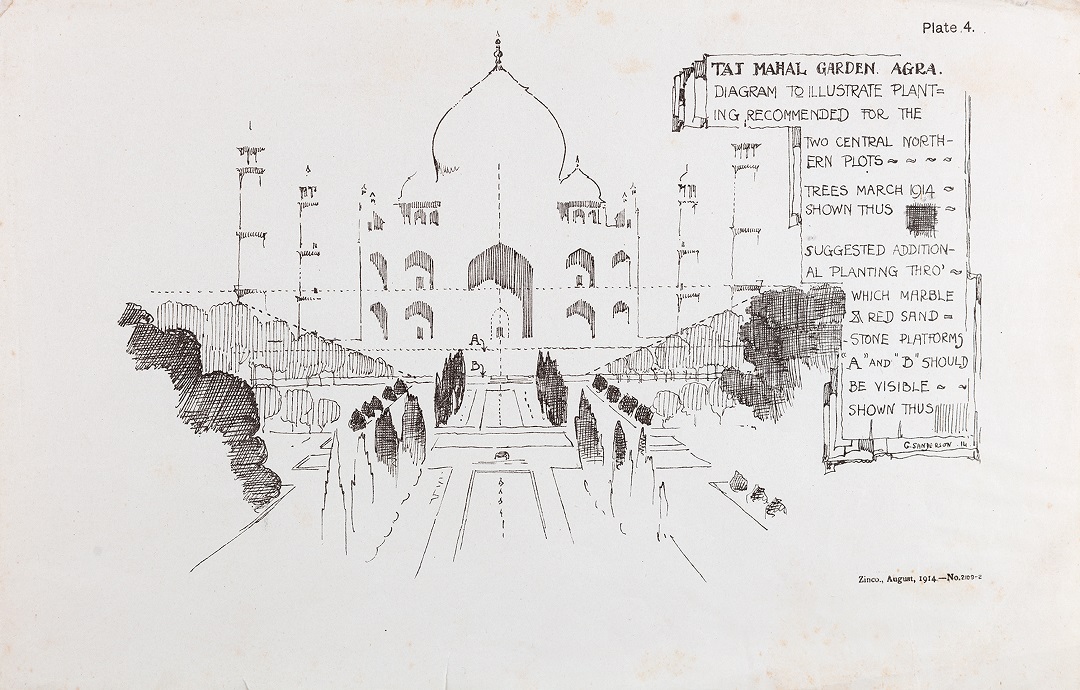The Afterlife of the Taj Gardens: Changes in the Landscape
The Afterlife of the Taj Gardens: Changes in the Landscape
The Afterlife of the Taj Gardens: Changes in the Landscape
collection stories
|
ARCHIVE DEEP DIVE The Afterlife of the Taj Gardens: Changes in the LandscapeHere are two images of the iconic Taj Mahal. One from the 1800’s and the other from the 1900’s. Do you spot the difference in the landscape? Do you notice any difference in the gardens? |
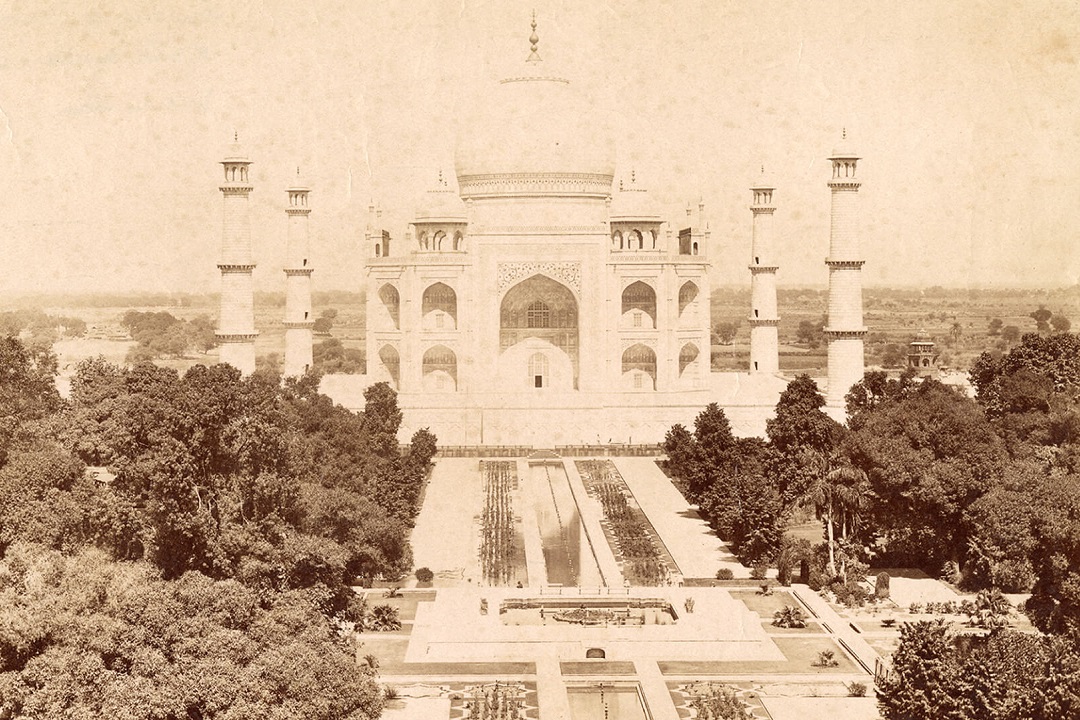
Unknown photographer
View of Taj, from its Causeway
c. 20th century
Silver albumen print on paper
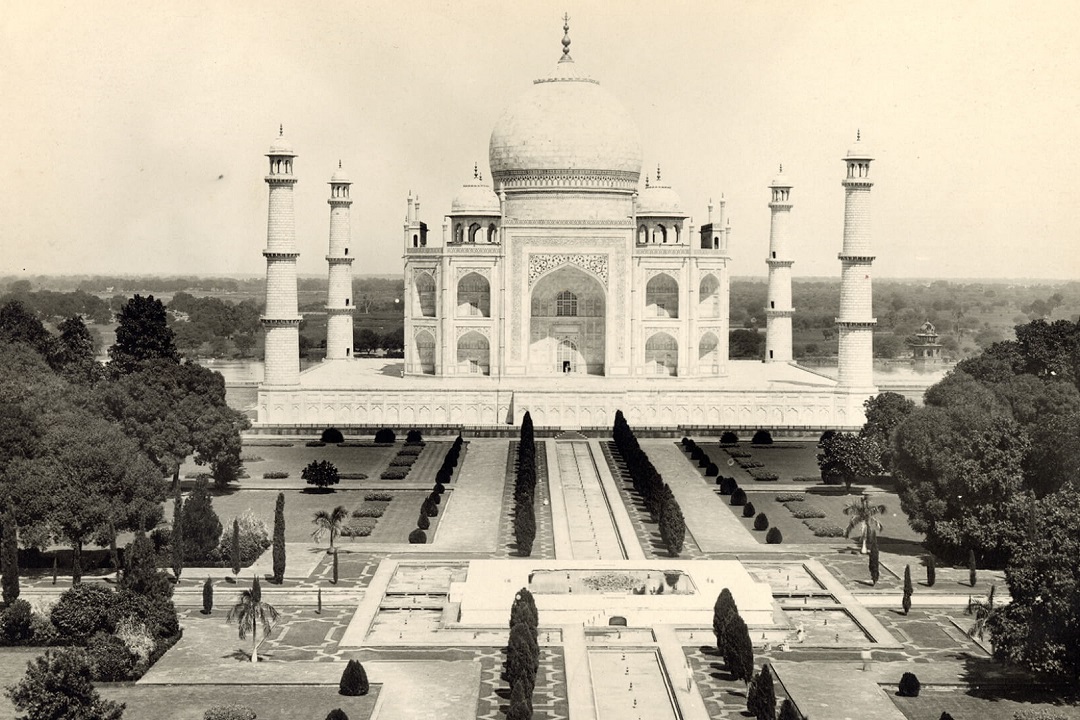
Unknown photographer
Taj Causeway
c. 20th century
Silver gelatin print on paper
|
Often described as ‘Poetry in Stone’, the Taj Mahal was laid out between 1631-43 by Mughal Emperor Shah Jahan as a mausoleum for his wife Mumtaz Mahal. It is the architectural elements of the Taj complex that grab the most attention, but in fact the garden is the heart of the complex . The visitors today are so transfixed by the Taj itself that they remember very little of the garden. DAG Archive attempts to illustrate the life and ‘afterlife’ of the Taj gardens, once its control was taken over by the British. This archive deep dive showcases the objects from A. E. P. Griessen’s (1875–1935) collection. |
|
Unknown photographer Taj and its Gardens c. 20th century Silver albumen print on paper |
|
Meet A. E. P. Griessen, Superintendent of Taj Gardens 'Mr Griessen must be gratified to know that his work in Agra will live and bring pleasures to untold numbers.' - E. J. Mordan, District officer, Agra, 5 April 1913 |
|
|
Unknown photographer
A.E.P. Griessen (Presented by Staff of Horticulture Division Raisina Delhi)
Unknown photographer
Griessen with his team at Taj Gardens
Unknown photographer
Taj and its Gardens
|
The Mughal Gardens ‘(Garden) is to the buildings what the soul is to the body, and the lamp to an assembly' |
|
|
Unknown photographer
Taj and its Complex
A.E.P. Griessen (Attributed)
Plan of Taj Taken 1868
Unknown photographer
Agra. The Taj Mahal from the Top of the Entrance Gate
|
Reimagining the Taj Gardens 'What were then dusty wastes are now green parks and gardens' - Lord Curzon on restorations at Agra, letter dated 11 December 1903 |
|
|
Unknown photographer
View of the Taj from its Causeway
John Edward Saché (Attributed)
Taj Mahal, Agra

|
Let’s take a look at the plan of Taj Garden from 1908 to understand the changes in plantation policies. Explore |
A.E.P. Griessen (Attributed)
Official Typescripts on Taj gardens addressed to D. Colnan, Commissioner of Agra, United Provinces.
A.E.P. Griessen (Attributed)
Official Typescripts on Taj gardens addressed to D. Colnan, Commissioner of Agra, United Provinces.
Unknown photographer
The Taj
Unknown photographer
View of Taj, from its Causeway
Unknown photographer
Taj Causeway
Do you notice the visual impact that Curzon and his team wanted to create by removing the trees?
A.E.P. Griessen
Statement of Annual Expenditure of Taj and Govt. Gardens, Agra
G. Sanderson
Taj Mahal Garden, Agra
|
Mahtab Bagh: A Mughal garden that remains 'Surely the godfearing shall dwell amid the gardens and a river in a sure abode, in the presence of the King Omnipotent.' - Quran, Sura 54 ‘The Moon’ |
|
|
Randolph Bezzant Holmes
Taj Mahal Agra, from the River
G. Sanderson
Taj Mahal Garden, Agra
further reading
Ebba Koch, 'The Complete Taj Mahal' (London: Thames & Hudson, 2006).
Eugenia W. Herbert, 'The Taj and the Raj: Garden Imperialism in India', Studies in the History of Gardens & Designed Landscapes, xvi 4, 2005, p.250.
'The Moonlight Garden: New Discoveries at the Taj Mahal' (University of Washington Press, 2001).
Credits
Written by P. Sindhuri Aparna
Archival material curated by Sanjana S.




